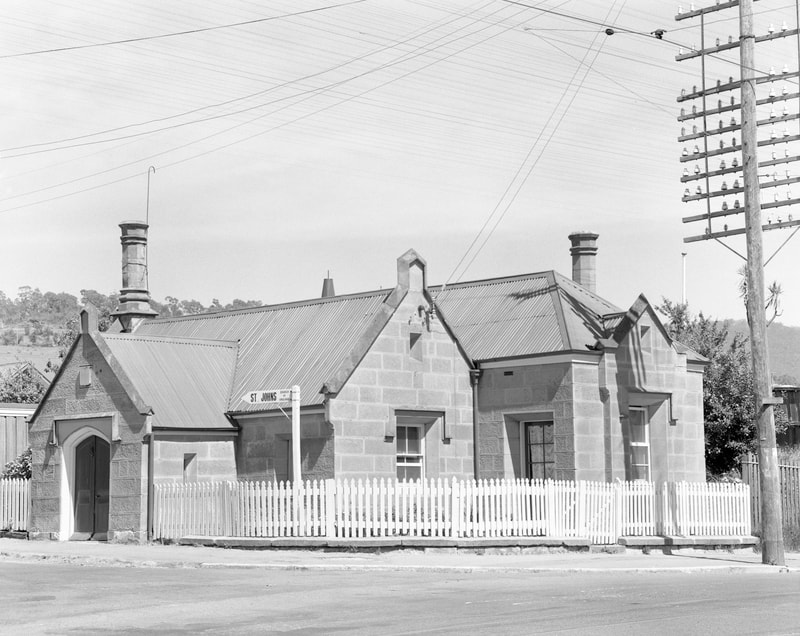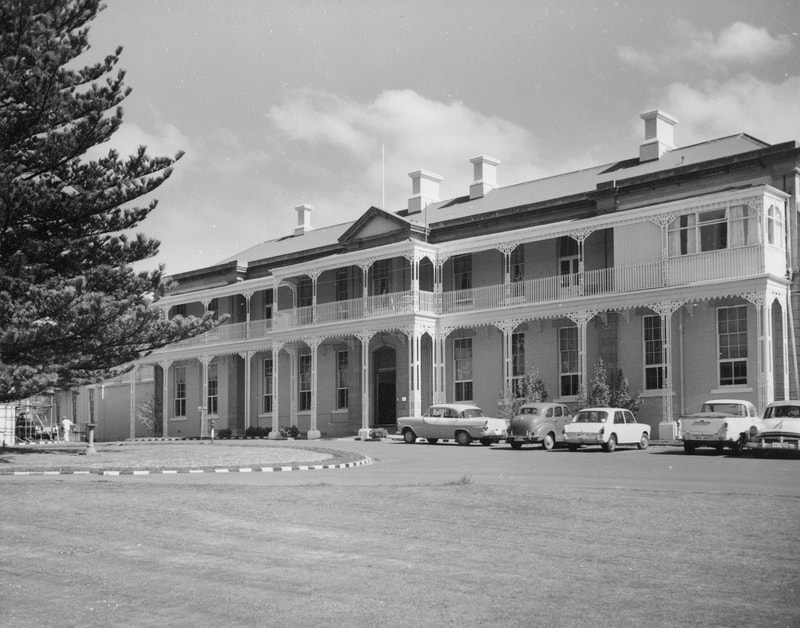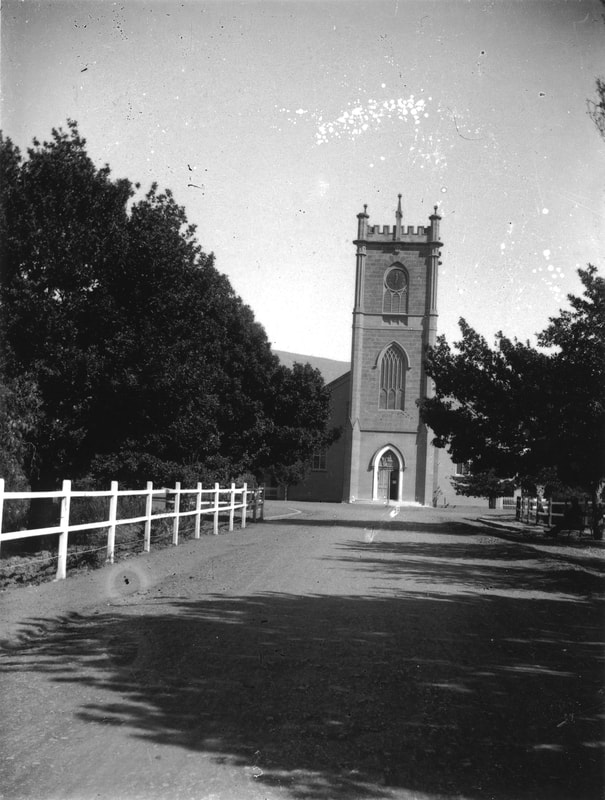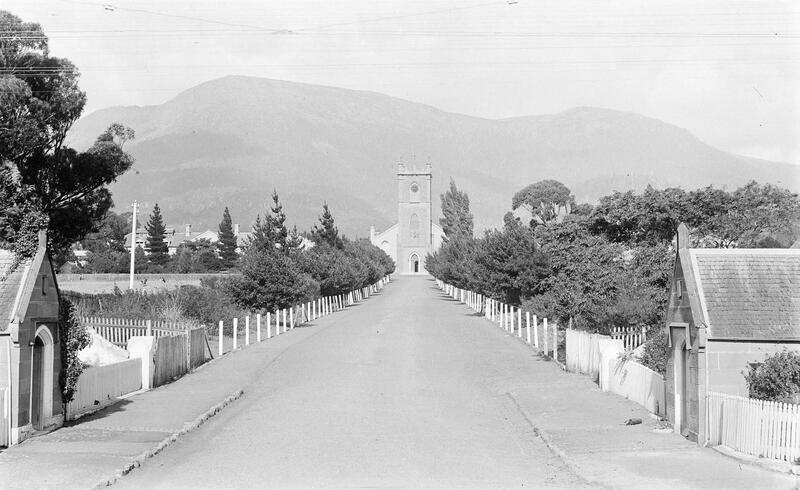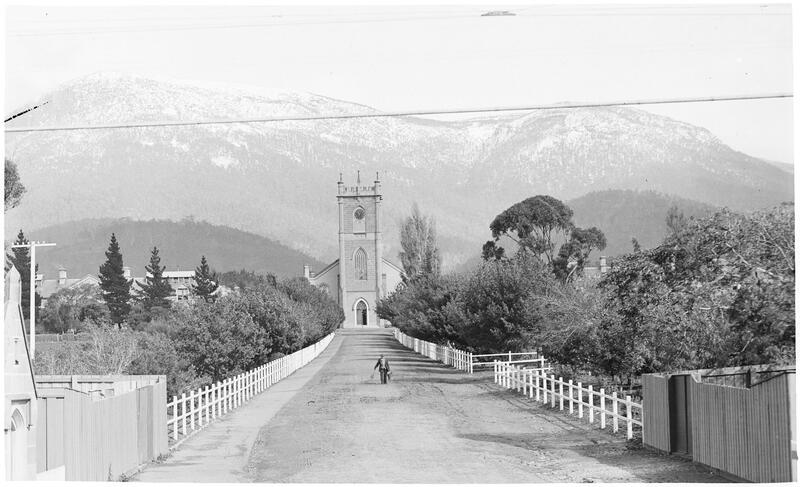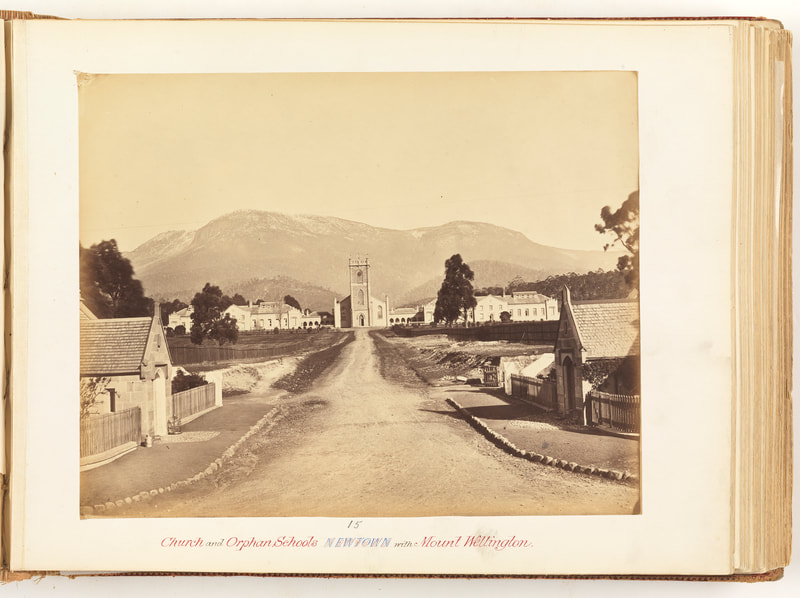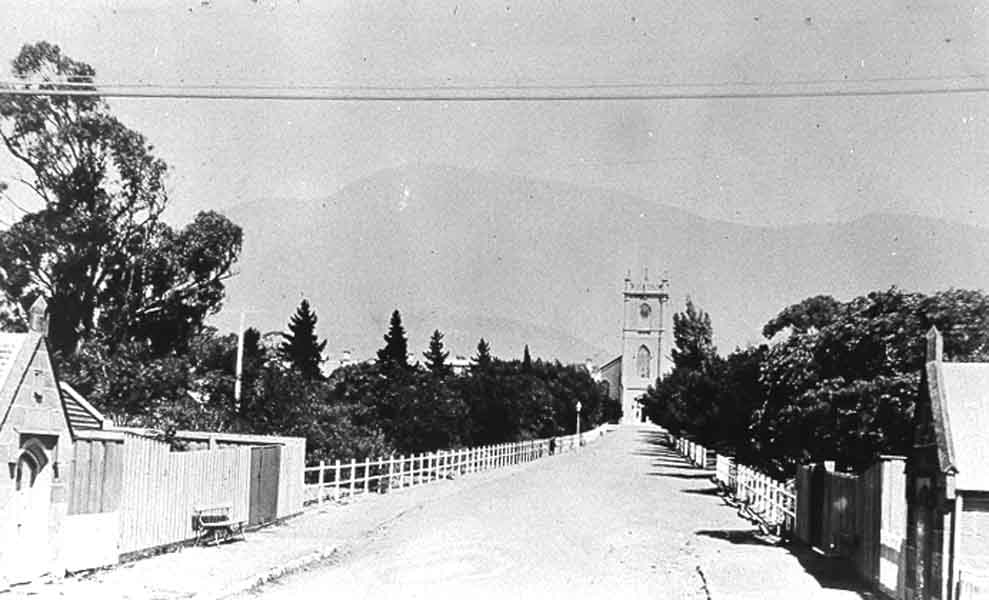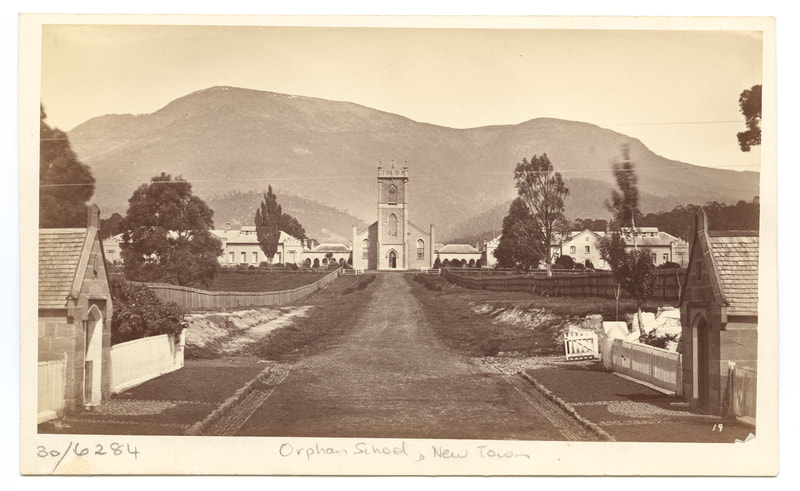1830: A committee formed to collect money from the public to build a church in New Town.
1834-1835: St John’s Church was built. Architect was John Lee Archer. Linked to the watchhouses with avenue of trees and connected to the orphans’ schools.
The church was built by convicts. Opened in 1835.
1838: Congregated when Bishop Broughton could eventually visit.
The church contained boxes for the gentry in the centre of the church, a private box for Government House, four large fireplaces, candles for lighting, free seats for servants and general community under the South Gallery.
The North Gallery (bell tower) had seals for children from the Orphan Schools. The South Gallery had seats for the convicts. Males and females separate. Seats for wardens near the stairway.
The pulpit was hugh and has been replaced. The clock was made in London in 1828. The bell tower is made of local stone. The church is made of local bricks. The rafters come from Mt Wellington.
1897: Queens Victoria Diamond Jubilee. Celebrated by planting trees along St Johns Avenue.
Today: church functions as a church for locals.
Queens Orphanage
1831: Kings Orphan Asylum opens. Built to house children. Most were children of convicts still under sentence.
1833: The Orphan School opens. One building for boys. One building for girls. Separated by the church.
1853: The newspaper said:
"The reception of orphan children, children deserted by their parents, or the offspring of objects of charity who are unable to provide for them; the above classes are paid for by the Colonial Government. The other class and principally as regards numerical strength, being about six-sevenths, are those of convict parents undergoing probation or sentence, or illegitimate children of convict parents unprovided for, these are maintained at the expense of the Government, and may be said on average to cost £16 2s 3d per annum for each child (including all expenses), which charge includes the keeping of the buildings in repair."
The Asylum also housed some Aboriginal children.
1861: The institution became known as the Queen's Orphan Asylum, or the Queen's Orphanage.
1879: The Orphan School was closed. The buildings were part of the Male Division of the New Town Charitable Institution.
Today: The two buildings are managed and contain Kickstart and their programs.
https://www.kickstartarts.org/
Watch Houses St Johns Avenue designed by James Blackburn. Sandstone.
Infant Orphan School
1862: Opened to relieve crowding in Orphan Schools on either side of St Johns Church.
1879: New town Charitable Institution begins.
1912: New Town Infirmary replaced the New Town Charitable Institution.
1934: New Town Rest Home begins and provides accommodation to needy of all ages.
1936: Name change to St Johns Park.
1994: Name change to Rosary Gardens. Managed by Southern Cross Care.
Rosary Gardens in New Town acquired from the State government – now 133 residential places.
https://www.scctas.org.au/
1834-1835: St John’s Church was built. Architect was John Lee Archer. Linked to the watchhouses with avenue of trees and connected to the orphans’ schools.
The church was built by convicts. Opened in 1835.
1838: Congregated when Bishop Broughton could eventually visit.
The church contained boxes for the gentry in the centre of the church, a private box for Government House, four large fireplaces, candles for lighting, free seats for servants and general community under the South Gallery.
The North Gallery (bell tower) had seals for children from the Orphan Schools. The South Gallery had seats for the convicts. Males and females separate. Seats for wardens near the stairway.
The pulpit was hugh and has been replaced. The clock was made in London in 1828. The bell tower is made of local stone. The church is made of local bricks. The rafters come from Mt Wellington.
1897: Queens Victoria Diamond Jubilee. Celebrated by planting trees along St Johns Avenue.
Today: church functions as a church for locals.
Queens Orphanage
1831: Kings Orphan Asylum opens. Built to house children. Most were children of convicts still under sentence.
1833: The Orphan School opens. One building for boys. One building for girls. Separated by the church.
1853: The newspaper said:
"The reception of orphan children, children deserted by their parents, or the offspring of objects of charity who are unable to provide for them; the above classes are paid for by the Colonial Government. The other class and principally as regards numerical strength, being about six-sevenths, are those of convict parents undergoing probation or sentence, or illegitimate children of convict parents unprovided for, these are maintained at the expense of the Government, and may be said on average to cost £16 2s 3d per annum for each child (including all expenses), which charge includes the keeping of the buildings in repair."
The Asylum also housed some Aboriginal children.
1861: The institution became known as the Queen's Orphan Asylum, or the Queen's Orphanage.
1879: The Orphan School was closed. The buildings were part of the Male Division of the New Town Charitable Institution.
Today: The two buildings are managed and contain Kickstart and their programs.
https://www.kickstartarts.org/
Watch Houses St Johns Avenue designed by James Blackburn. Sandstone.
Infant Orphan School
1862: Opened to relieve crowding in Orphan Schools on either side of St Johns Church.
1879: New town Charitable Institution begins.
1912: New Town Infirmary replaced the New Town Charitable Institution.
1934: New Town Rest Home begins and provides accommodation to needy of all ages.
1936: Name change to St Johns Park.
1994: Name change to Rosary Gardens. Managed by Southern Cross Care.
Rosary Gardens in New Town acquired from the State government – now 133 residential places.
https://www.scctas.org.au/
